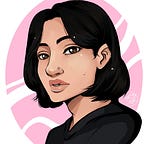Embracing Evil
My last essay was all about how I am not inherently evil. Today, I present to you the reasons why I’d like to be evil…
…onstage, that is.
It will surprise very few people to find out that I’m a theatre kid at heart. From elementary school onward I adored taking part in productions. In ninth grade, I enrolled in a beginning drama class. In sophomore year I discovered Broadway and filled my parents’ car playlists with Andrew Lloyd Webber and Stephen Schwartz. And in college, I hit the peak of my thespian career: I was cast in a student-written musical.
Throughout my pursuit of this hobby, there has been one constant: the roles I’ve enjoyed most, both as an actor and a member of the audience, were villains. I am, and have always been, a sucker for a good ol’ bad guy – a campy, maniacal, glitzy, crooning villain. At fifteen, I listened to Phantom of the Opera and belted off-key along to the titular murderer’s lyrics. During my brief singing lessons, I picked “Poor Unfortunate Souls” as the song I wanted to study. For my ninth grade drama final project, a monologue presentation, I had one (sadly unfulfilled request): could I get a villain monologue? My audition song for the student-run musical was “My Friends” from Sweeney Todd, a ballad crooned by Sweeney to his beloved razors – and the role I landed was that of the main antagonist.
But Aditi, you might ask, why? Need we remind you of your resemblance to a tiny baby owl? How can you, of all people, play a villain? Why do you even like them, anyway? Why pick evil over good, even if it’s just onstage?
As befits the tone of this blog, I could point out a ream of academic reasons. Many classic villains, in contrast to the Wonder-Bread purity of the heroes, have stigmatised, marginalised traits – some of which I, too, share. Thanks to systemic, culturally pervasive homophobia and racism, there is a long-standing cinematic, literary, and tradition of queer-coding villains and/or giving them “ethnic” traits. So Dr Frank N Furter, the antagonist of The Rocky Horror Picture Show, is a glitter-clad openly queer vamp. Audrey II, the toothy, charismatic flytrap plant who threatens the protagonists in Little Shop of Horrors, is lipsticked and ambiguously gendered, and nearly always played by a Black actor or actress. Ursula from Disney’s The Little Mermaid was designed in homage to Divine, a famous American drag queen. I share Mother Gothel’s hook nose and thick wavy dark hair, not Rapunzel’s blonde ingenue looks; I have Jafar’s brown skin and heavy eyebrows. I don’t see myself represented in Ariel or Seymour or Brad and Janet – I see myself in their foes.
But you know what? That’s not the primary explanation for why I embrace theatrical evil. The main reason is actually quite simple, and involves no historical references or literary theory:
Villain roles are fun. They get the zaniest outfits and the snappiest lines. Whether it’s “Sweet Transvestite”, “Shiny”, “Charming”, or my personal favourite, “Mean Green Mother From Outer Space”, everyone loves a good villain song. Even non-singing villains, like the one I played in college, get toothsome monologues replete with unhinged laughter.
Onstage villains – aliens who plan to eat the human population (or seduce it), octopus ladies who steal your soul, serial killers who sing cheery songs about baking pies from human flesh – are bad in outlandish, silly ways. They’re so ludicrously, dramatically, single-mindedly evil that to perform such roles is almost cathartic – a way to channel our inner frustrations out into the world while providing laughs.
And in 2022, isn’t that what all of us need?
